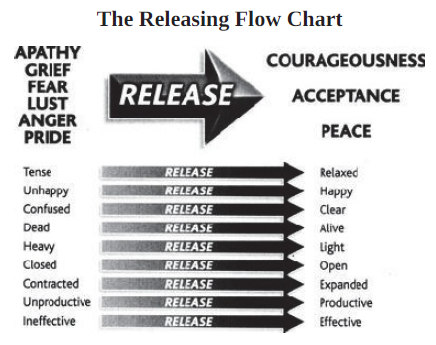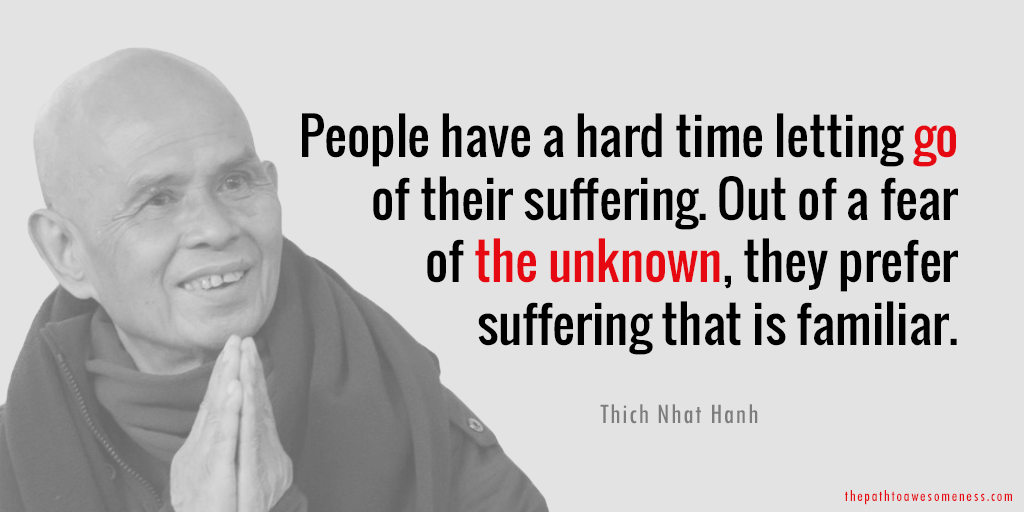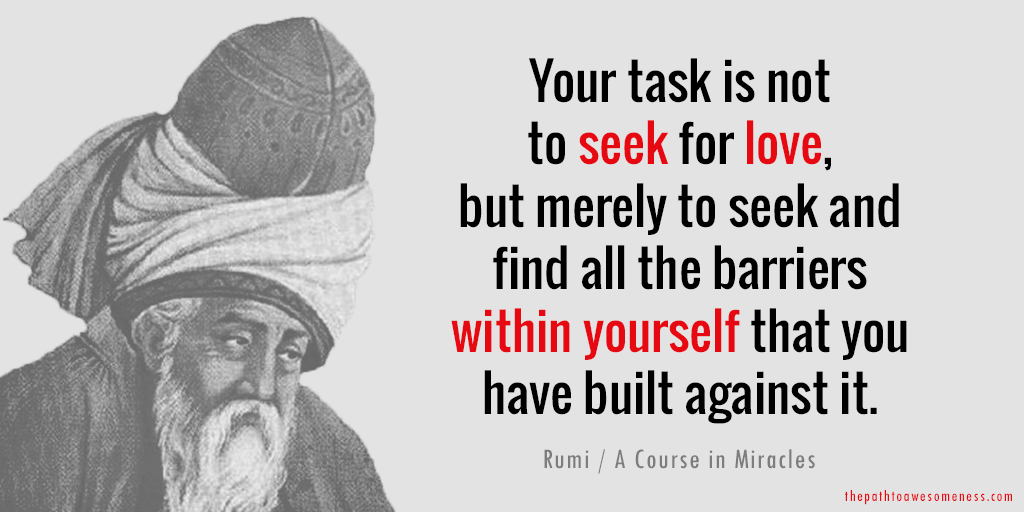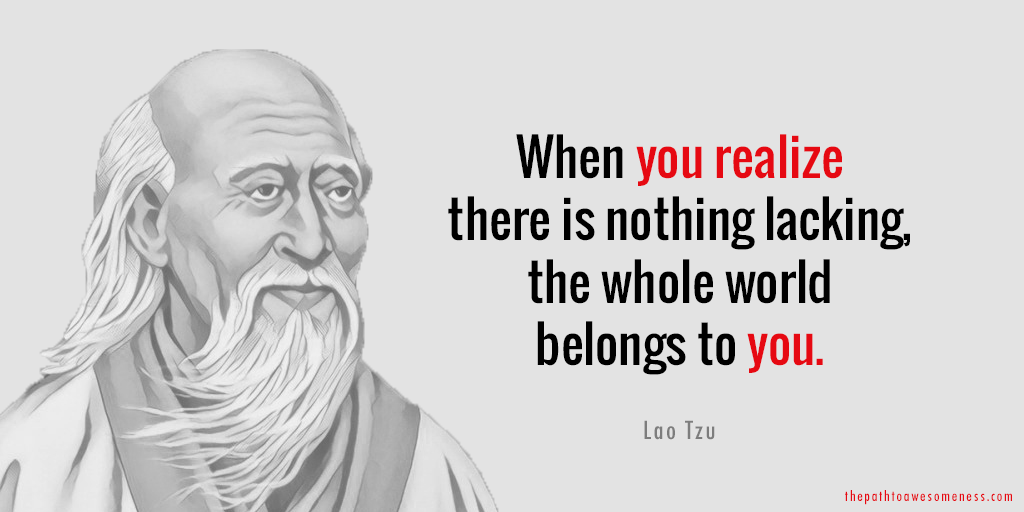
You are the key to your own happiness, health, well-being, and success. All you need to do is use this key to unlock the secrets of freedom and happiness that are waiting to be discovered right within your own heart. – Hale Dwoskin
I think I’ve first heard about The Sedona Method while listening to another online talk, where the speaker briefly mentioned it as the basis for the techniques she was teaching. Much like a modified version for clearing abundance blocks. That was around 2013.
Now, a few years later, it popped right back into my head, I thought I might check it out. So I Googled it, landed on their blog page and browsed through some of their articles. The topic of anxiety got me curious if it would be of any real help in, as the method calls it, “releasing” the feeling.
Hale says it’s similar to releasing a pencil or any other object you hold in your hand. Awareness is always the first step, yes. Then, what? You will notice that it’s you holding onto the pencil, the object is not attached to you. And because you’re the one holding it, you can release it as well.
Our thoughts are objects, too – the object of our awareness. Our mind has a habit of attaching to them. Yep, ego loves attachment. So, how do we make it let go? Here’s where I got hooked by Hale: “You give your mind a bone to chew on.”
What’s that bone composed of? A series of questions.
The Sedona Method consists of a series of questions you ask yourself that lead your awareness to what you are feeling in the moment and gently guide you into the experience of letting go.
Friends, you might be as surprised as I was to find out how easy, simple, and effective this method is. Just by asking questions.
Are you ready?
The Third Option
Neither suppression nor expression is a problem in and of itself. They are merely two different ends of the same spectrum of how we usually handle our emotions. A problem arises when we don’t feel in control over which one is happening, and many times we find ourselves doing the opposite of what we intended. Very often we get stuck on one side of the spectrum or the other. These are the moments when we need to find the freedom to let go.
The balancing point and natural alternative to inappropriate suppression and expression is releasing, or letting go—what we call the Sedona Method.
Releasing – the third option, one that we are naturally good at, but have forgotten. Or like most of us, have been taught differently. We learned the other two unnatural means: suppression and expression, and became an expert at it.
They are the extreme opposites of the spectrum. What the Sedona Method does is put it in balance by bringing us back to our center, the point where releasing happens naturally.
Hale points out that what the expression “Time heals all wounds” means, unconsciously, is “Give me time to suppress this.”
Isn’t that what we tend to do? Escape, hide, or resort to substances (which eventually becomes addictive) and any other coping mechanisms. Coping is not the same as healing. Healing is by letting go.
So our soul calls our attention back often in the form of sickness and uses the body as its messenger. In my case, it was hyperthyroidism. The thyroid represents the Throat Chakra, the energy center for expression. When the blockage was cleared and released, it healed itself back into balance. (Check out The Path to Awesomeness Starter Kit as an introduction to energy healing modalities)
Now, we have the Sedona Method to complement whatever therapy we use for healing. Letting go is not just a concept anymore, but something practical and doable. Release in an instant!
Threesome
There are three ways to approach the process of releasing, and they all lead to the same result: liberating your natural ability to let go of any unwanted emotion on the spot and allowing some of the suppressed energy in your subconscious to dissipate. The first way is by choosing to let go of the unwanted feeling. The second way is to welcome the feeling, to allow the emotion just to be. The third way is to dive into the very core of the emotion.
To give us a better understanding of the releasing process, take a look at The Releasing Flow Chart as shown in the book:

If you notice, the left column represents our state when we are either in suppression or expression. While on the right shows when we are releasing.
Hale reminds us that at the core of who we are, there is courageousness, acceptance, and peace. Thus, they become the basis of the 3-way approach to releasing:
- Choosing to let go of the unwanted feeling – PEACE
- Welcoming the feeling, to allow the emotion just to be – ACCEPTANCE
- Diving into the very core of the emotion – COURAGEOUSNESS
More importantly, Hale emphasizes that we are NOT what we feel. Feelings are only an experience. And like all experiences, they’re also transitory.
So the next time you feel angry or sad, say “I feel angry” or “I feel sad,” which is more valid than “I am angry” or “I am sad.” You validate your experience without invalidating who you are. You stay awesome while experiencing it all.
TSM Process
These questions are merely asking you if it is possible to take this action. “Yes” or “no” are both acceptable answers. You will often let go even if you say “no.” As best you can, answer the question that you choose with a minimum of thought, staying away from second-guessing yourself or getting into an internal debate about the merits of that action or its consequences.
All the questions used in this process are deliberately simple.
They are not important in and of themselves but are designed to point you to the experience of letting go, to the experience of stopping holding on.
Hale says the book is written similarly to how they facilitate their courses and live workshops (which originated in Sedona, hence the name).
TSM applies to all areas of life and can be done instantly anytime. I find it particularly helpful whenever unhealthy thoughts, especially anxious ones, start crawling in my head. TSM breaks thinking patterns, opens up awareness, and gently recalibrates your attention to align with Peace, Courageousness, and Acceptance.
Check this out:
That’s a very thorough drill of TSM.
What I did, and what I’d suggest, is make it simpler by just asking: “Could you let it go?” while paying attention to what you’re feeling. And instead of “When?”, I just add now to the question: “Could you let it go, now?” Then I ask it alternately until I feel relieved or relaxed. At other times, I also ask “Could you allow?” and “Could you let go?” interchangeably.
You can then go deeper and more specific to your issues in succeeding sessions. The book shows different approaches depending on the issue you want to address.
But just for now, could you let it go?
The Pitfalls
Most of us have become very good at finding problems and limitations. We are experts at the quest for limitation because of our habit of looking for our problems when they are not here.
Hale brought up the common pitfalls we’ll most likely encounter in the process of letting go:
- “I suffer, therefore I am.” – becoming identified with problems. Like “Who would I be without my problems?” Which is a good question: Who would you be without your problems? What kind of life would you be having? Because it’s truly possible.

Hale says that we cling to problems out of fear of uncertainty from letting go. So instead, we prefer the familiar because then we’d know what to expect, even if those expectations are not good.
- “But what will I talk about?” – misery loves company, eh? While there’s relief in voicing out our problems and acknowledging them, we must also know when to stop. How about we share our goals and accomplishments, our hopes and dreams next time?
- “It’s mine, that’s why.” – as if our problems will make us feel special. Haven’t you noticed when we’re in a casual group convo, how we seem to patronize each other’s problems? It helps to examine our intention for bringing up our issues. Do we genuinely seek healing? Or do we just crave the attention we can get from them?
- It is not wise to ask, “Why?” – Hale asks if we’d rather understand the problems or just be free of them. It’s a knee-jerk reaction to think, “Why did this happen to me?” But would it really help to find that out? Or would it just add up to guilt and self-blame?
- Rushing past life. – Hale bids us to develop an attitude of approaching life as though we have all the time in the world. What we think we’re running after has always been here and has never left us – the happiness and freedom right here, right now.
The Greatest Obstacle
The greatest obstacle to being in the flow all day long, every day, is resistance to what is.
In fact, we often resist the things we really like and care about. And if someone tells us to do something, that’s a sure-fired trigger for resistance. It may come up even if we would like to do what we’re being told to do. Resistance can be self-sabotaging and counterproductive, and it’s operating constantly, because we live in a sea of “shoulds” and “have to‘s” and “must do’s” and other imperatives. Any time there is an imperative, it stirs up resistance.
Come to think of it, how would anything we wish for in life flow into our experience if we are resisting it? Sounds silly but it’s true.
Hale explains that resistance applies both ways. When we resist something we DON’T want – not having enough, disease, unhappy relationships – we are also resisting what we DO want – financial abundance, vibrant health, fulfilling relationships. Resistance is resistance either way, and that is what’s blocking the flow.
Another important aspect of resistance is the very nature of the mind to resist. Hale says that we almost automatically resist when we’re told to do something – the should, must, and have to – even if we actually like doing it.
Here’s why and where TSM works effectively. Because it’s merely asking questions, our minds do not find it offensive and thus lessens the resistance.
In the book, you’ll find several exercises that can be done alone or with a partner. For greater clarity and deeper introspection, there’s a written method where you list what you want to be, do, or have, and your current feelings about it, so you can release them one by one at a time.
(Try TSM exercises with Abraham Hicks’ processes. See Ask and It is Given for The Art of Allowing practices. Go easy and have fun!)

Let Go of Wanting Change
Let go of the feeling of wanting to change it—“it” being anything in your life, or within the scope of your personal experience, that you do not like and want to be different than the way it is, including events in the past. If you remain open to the elegance and simplicity of this solution, it has the power to set you free.
Accepting what we can’t change is not always easy. The mind rebels at the whole notion. However, when we let go of wanting to change the way things are, we naturally move into greater acceptance without having to try to force it to happen.
When we are focused on wanting to change a problem, our awareness of the problem causes it to persist. We hold the issue in mind in order to change or resist it.
If resistance is the greatest obstacle, what then allows the flow? Acceptance.
Nope, this is not passivity. Acceptance is more about our attitude than our actions toward change.
Hale again brings up another aspect of the nature of the mind: it doesn’t translate negations – words like not, never, or don’t.
Don’t think of a flying elephant… And there goes Dumbo flying in your head.
Stop thinking I’m cute… See? It just makes me cuter. Because what you resist persists.
The harder we try to not create what we do not want, the stronger we’re holding on to the idea; thus, the more likely we are to create it in our reality.
So Hale asks us to approach change differently. To let go of wanting to change it. In other words, allow change to happen on its own accord, without you forcing it.
From a place of acceptance, you can act on what can be done on your part and let go of the rest, and be at peace with yourself no matter the outcome.
The Four Basic Wants
Wanting equates to lack. It does not equal having. Our lives are limited by our tendency to focus on the struggle that leads up to having, rather than having itself.
Everyone is motivated by four basic desires that exist beneath our thoughts: emotions, beliefs, attitudes, and behavior patterns. These underlying motivators—the desire for approval, control, safety, and separation—form the core of all our limitation. When we release these wants, we can have what we desire and stay motivated. In the process, we simply let go of our sense of deprivation and lacking.
What you want is NOT what you really want, but a deeper want that underlies it. And Hale says there are four basic wants:
- Approval
- Control
- Safety
- Separation
It means that our superficial wants, say money, are driven by one or more of the basic wants. For me, money could represent my wanting control or safety.
Someone wanting a romantic partner could be seeking approval since that’s what she craved the most as a little girl from her parents.
Now, remember there’s nothing wrong with these desires for they are natural to the human experience. We’re not suggesting to deprive ourselves of our humanness.
In fact, it’s what TSM aims for – to let go of the feeling of deprivation, of not-enoughness, which makes us want what we want.

Hale goes into detail about these four basic wants in another chapter of the book and shows several examples of how to work around them.
Hootlessness
Attachments are those things that we desire to hold close. Aversions are those things that we desire to hold away. In both cases, the operative word is “hold.” Since they are the leading cause of our unnecessary suffering, a primary definition of freedom would be having no attachments and no aversions.
When you set a goal and use releasing to achieve it, you bring up into your awareness the attachments and aversions that you have about that particular issue. Then, as you release your attachments and aversions to the goal, you’ll either achieve it or you won’t. But, either way, you’ll have lightened your load of suffering. You’ll become free.
We mentioned earlier that wanting and not wanting are opposite sides of the same coin. Just as positive and negative. Polarities, right? They’re also what our attachments and aversions are when it comes to goals.
TSM works on releasing both. And once you’re free of them, you get to a state of what is called “Hootlessness,” a term coined by Lester Levenson, creator of TSM and Hale’s mentor. Awesome!
Hootlessness is when you do not give a hoot whether you achieve a particular goal or not.
It’s when you become detached from the outcome or the fruit of your action. “Karma Yoga” as we learned from The Power of Now.
Hale points out that it’s not the struggle that leads to manifesting the goal. It’s the letting go of the struggle that makes it possible. Hoot!
Releasing Worry and Anxiety
On some level, we subconsciously want or expect anything we’re afraid of to happen. Not consciously —subconsciously. Once we can welcome this, we can release.
We prefer the false sense of security that comes from preparing for what we don’t want to the uncertainty that comes from not knowing what is going to happen—even if what we know is going to happen is not a positive outcome. But again, even though we may get to be right by being prepared for a disaster, we may also be bringing the disaster about through our inner and outer preparations. Whenever we worry, we’re holding in mind what we don’t want, and that is what we tend to get.
When something unfortunate happens, how often do you catch yourself thinking, “I knew it was going to happen,” or something along those lines?
It might come as a surprise, but Hale says whenever we’re afraid of something to happen, we’re kinda wanting and expecting it to happen.
Think back to some of those times and check in with yourself… Kinda, yeah?
Anxiety is based on something bad that happened in the past, which makes us worry it will happen again in a future time.
Or it could be based on what happened to other people, what we saw on TV, on our Facebook feed, and we fear it could happen to us, too.
Whatever the case may be, we don’t want it to happen. But remember, the mind doesn’t translate the “don’t.” So while we consciously think we don’t want it, subconsciously we do!
Now, could you let go of wanting that to happen?
I know it sounds strange, but anytime worry and anxiety bug you, throw in the bone for your mind to chew on:
“Could you let go of expecting it to happen?”
“Could you let go of wanting it to happen?”
Five Principles for Healing
Most of the suffering, if not all, that accompanies physical disease derives from our emotional reactions to what our bodies are experiencing.
Even the bodies of saints, sages, and those who are emotionally healthy get sick and die. So, why give ourselves such a hard time? If you have an illness, don’t add to it by judging yourself poorly for having that particular condition.
Nonetheless, even when our pain or other symptoms persist, it is always possible to let go of our emotional reactions to them, and therefore ease our suffering.
I appreciate Hale for bringing that up: even saints and sages get sick. Not because it’s the path to martyrdom, or they sacrifice themselves, or they are punished by God. It’s just that sickness could be what they signed up for, their soul contract, the life-plan their soul has devised that leads them to self-realization.
As in the case of spiritual teacher Ram Dass, who continued to soar higher spiritually despite his deteriorating physical body until his departure. But more often than not, when one becomes healthy spiritually, mentally, emotionally, physical health follows suit.
So please set aside your judgments for a while (or for good) and hear out what Hale has to say in regard to healing:
- Be Open to the Possibility of Healing. To change your body, change your mind. Are you open to the possibility that releasing your trapped emotions can improve your physical health? Are you open to alternative healing modalities?
- Love Yourself as You Are. Could you release your preconceived judgments about yourself? Could you let go of disapproving of yourself and your body?
- Going from Why’s to Wise. Let go of trying to figure out why you got sick. You got sick, then move toward healing. We don’t get our health back. Rather, we get back to health.
- Going Beyond the Diagnosis. When referring to sickness, Hale suggests to say it in the past tense. “I had hyperthyroidism.” It tricks the mind to believe you’re already healed. Then affirm your well-being in the present. “I am healthy and awesome.”
- Letting Go of Your Physical Pain and Symptoms. Aside from applying TSM methods, Hale recommends alternating between feeling the pain and symptoms fully and feeling the space that surrounds it.
As always, knowing is not the same as experiencing. The Sedona Method, or any other techniques we learn, is as good as you practice it. These healing tools work if we do.
Now, go on. Heal!
The Sedona Method: Your Key to Lasting Happiness, Success, Peace and Emotional Well-Being
ABOUT THE AUTHOR
HALE DWOSKIN is the CEO and Director of Training of Sedona Training Associates, an organization headquartered in Arizona. He co-founded the company in 1996 to teach courses based on the emotional releasing techniques originated by his mentor Lester Levenson. He is an international speaker and featured faculty member at Esalen and the Omega Institute. For the last quarter century, he has regularly been teaching the Sedona Method to individuals and at corporations throughout the United States and the United Kingdom, and leading instructor training and advanced retreats since the early 1990’s.
Visit sedona.com for more info.





